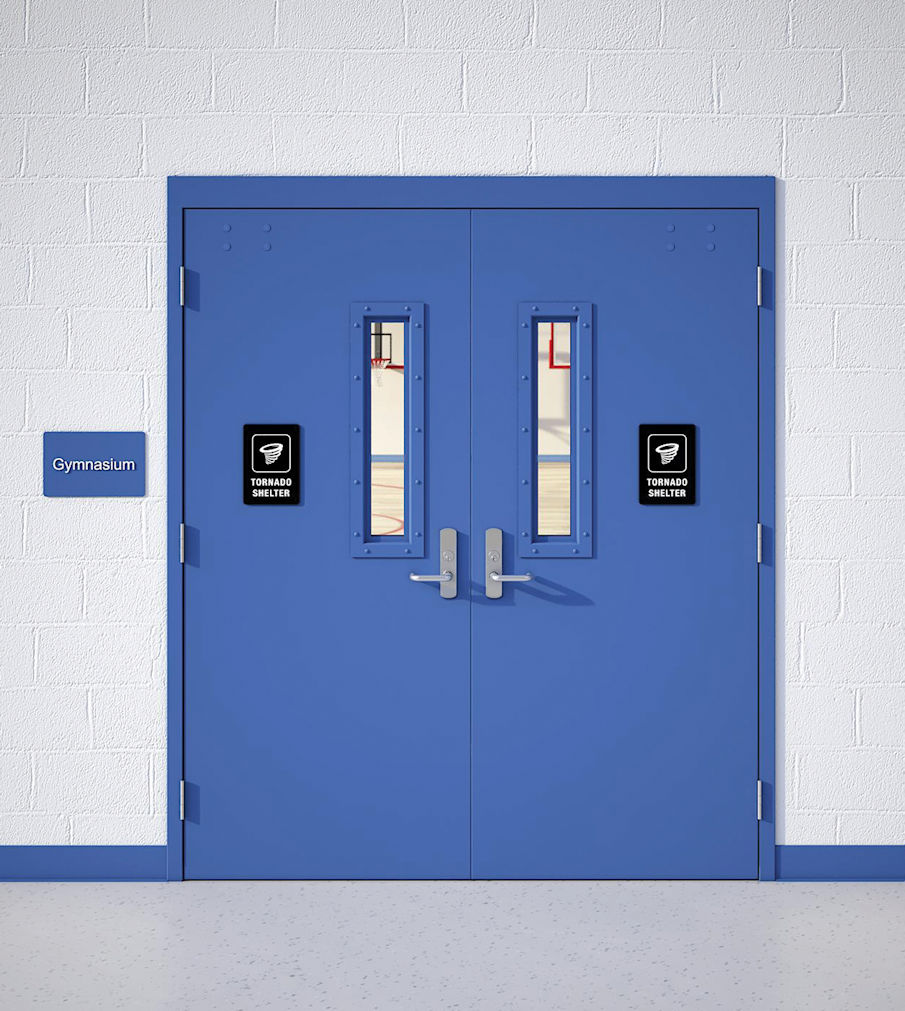 Here’s a little quiz question…this one caught me by surprise the first time I noticed it:
Here’s a little quiz question…this one caught me by surprise the first time I noticed it:
Besides a communicating door between hotel rooms, where might you find a fire door that is not required to be self-closing or automatic-closing?
The answer: In a storm shelter.
ICC 500 is the ICC/NSSA Standard for the Design and Construction of Storm Shelters. In areas where the shelter design wind speed for tornadoes is 250 mph, the International Building Code (IBC) requires certain types of buildings to have storm shelters that comply with ICC 500 (more on that here).
Chapter 6 of the ICC 500 standard addresses fire safety for storm shelters. In addition to requirements for fire protection systems and fire extinguishers, this chapter mandates a 2-hour fire separation between a community storm shelter and other areas of the host building. There are some exceptions, and under the following circumstances, a fire separation is not required:
- When the occupant capacity is designed to be 16 or fewer occupants.
- If the storm shelter is in the basement or underground, and the occupant capacity is designed to be less than 50 people, and there are at least two egress doors. These doors must be separated by at least a distance equal to 1/3 of the overall diagonal dimension of the storm shelter.
- The occupant capacity is designed to be less than 50 people, and there is an additional egress door, hatch, or emergency escape opening that leads directly to the exterior.
- The shelter has at least two egress doors, at least 50 percent of the total required egress capacity leads directly to the exterior, and the means of egress is code compliant for the occupancy.
If a storm shelter is not subject to any of the exceptions listed above, the fire separation is required, and the openings in the separation must be protected by fire door assemblies. For these openings, ICC 500 states: Fire doors and shutters in fire barriers required solely for compliance with Section 603.1 shall not be required to be self- or automatic-closing.
The intent is that the doors will be closed manually and will provide the required protection when they are in the closed position. Note that if the fire door assembly is required for another reason – for example, if the separation is required by the IBC rather than by ICC 500, the opening protective would have to meet the applicable requirements of NFPA 80 – including a door that is self-closing or automatic-closing.
Any questions?
You need to login or register to bookmark/favorite this content.








Lori,
Would this be a case where codes and standards that are in conflict with each other that the more stringent code or standard would be applied?
Paul
Hi Paul –
Good question. I don’t think so, in this case. Theoretically, these particular fire doors only need to do their job when they are closed, and when they are open, the separation is not needed. This is similar to the thought process behind communicating doors in hotels.
– Lori